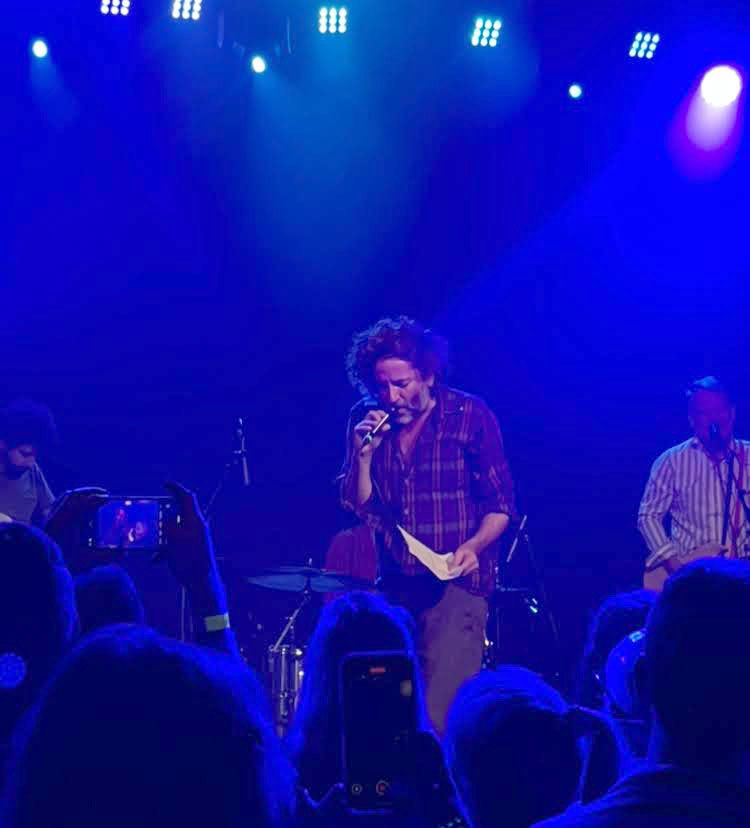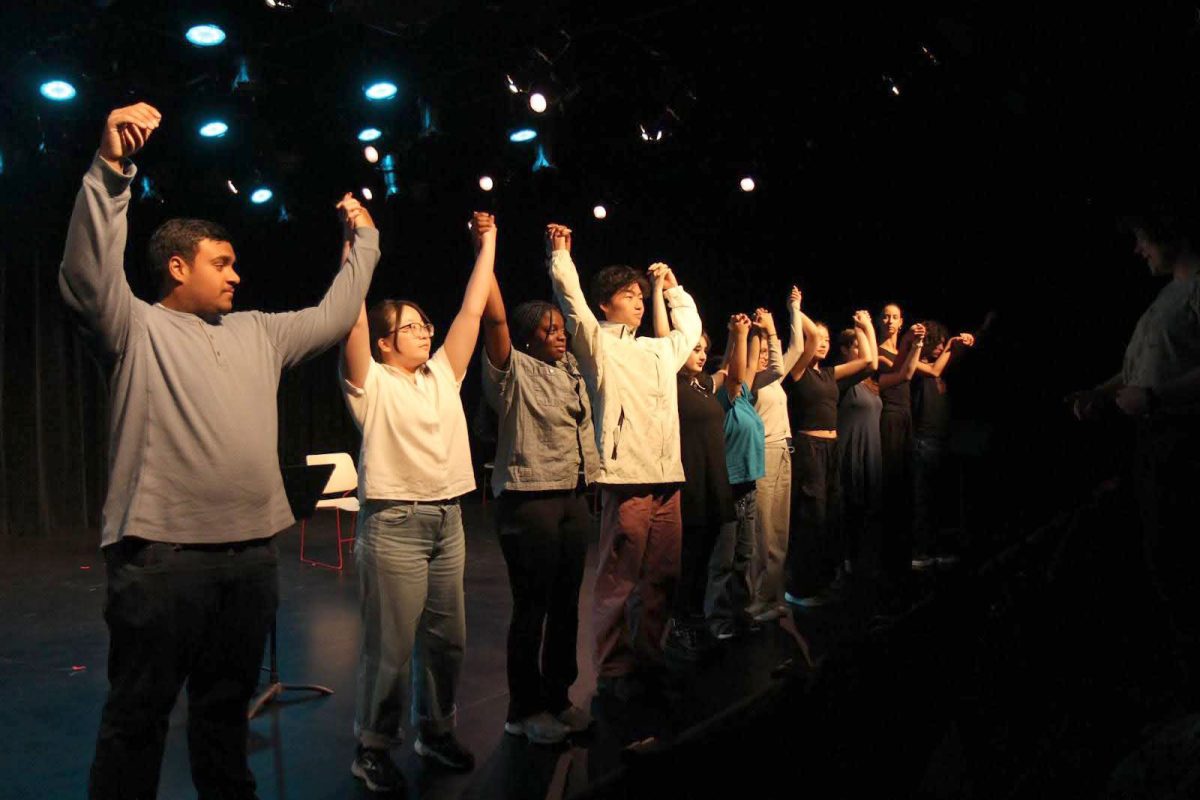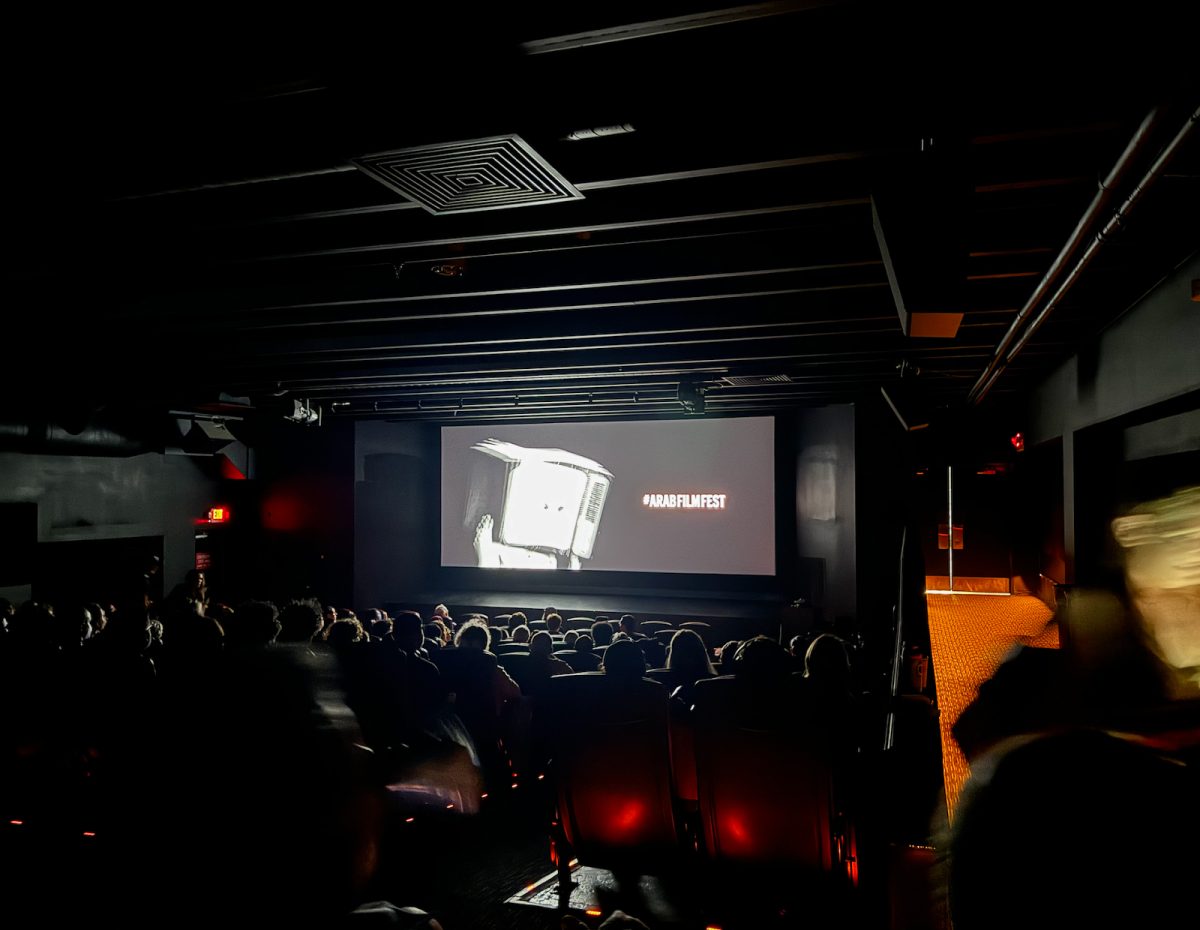
Levine Morales began organizing in 1969 when he was just 13. That was the year when two Black Panther leaders were killed by Chicago police, and only two years after Levine Morales moved to Chicago from Puerto Rico. While he never gave up his Puerto Rican roots, Chicago is where he found his stride as a budding young activist. He began making art to bring communities together, and to make their causes visible. From there, he developed his vision as an artist and, perhaps more importantly, as an activist. That vision led him to engage with communities where he saw potential for positive change. He has spoken in prisons and coffee shops, universities and art studios.
Levine Morales shared stories from these communities through a combination of written word and art on multi-media posters, each one dedicated to a specific community or cause. One poster read: “Minneapolice. Protecting wealth and whiteness since 1867.” A second poster read: “Children are not an investment in the future. Children are children.” This, Levine Morales said, was meant to bring attention to how politics commodify children without acknowledging their inherent value. Levine Morales’ artwork is meant to bring awareness to flaws in the system and to spark meaningful dialogue.
Levine Morales uses art to challenge what he calls the “toxic drumbeat” of lies too often normalized by politicians and the media. He cultivates art and conversation, hope and humor to fight these lies. He argues that these lies are made to keep people “paralyzed and feeling inadequate.” By amplifying people’s stories, he gives them back their “agency and value.”
In many ways, Levine Morales sees activism like acupuncture: “The right needles at the right time,” he says, “can release power you didn’t know was there.” This power lies in the cultural soil of a community, and in the organizers who cultivate that soil to protect the community.
When unlocked, that power can propel a movement and inspire positive change. Levine Morales explains that “activism, at its best, is healing.” Likewise, “healing can take the form of activism. Both are about re-framing stories for people.” Storytelling is at the heart of Levine Morales’ artwork as he uses stories to inspire empathy. Each piece of art celebrates the “underlying humanity” in every story. This celebration undermines stereotypes, and to change people’s views of one another. Art sparks curiosity, and can lead people to develop understanding for groups that they have been long taught to fear or hate. Levine Morales calls curiosity “politically potent” and something to encourage.
Considering how he tricks people into realizing their natural curiosity, it makes sense that Levine Morales is a self-proclaimed “healer and trickster organizer disguised as an artist.” Levine Morales was not afraid to express his sense of humor, and he even discussed how humor is a useful tool in activism. Humor “stimulates hope,” he says, and is “something to be taken very, very seriously.” Jokes tap into human nature and our desire for change, and that desire is important to cultivate for social movements. At the end of the day, Levine Morales reminds us, “life is ridiculous,” and realizing this is “vitally important for social change.”
“If done right,” he continues, “activism can be healing.”
Throughout his life, his goal has been to amplify community voices, to build coalitions, and to foster healing through his artwork. And he has helped to do just that. The two enemies to healing, he says, are cynicism and despair. These can be just as poisonous for activism. Only by being hopeful can one do the work needed to be an activist.
Levine Morales credits other artists with inspiring him to keep moving forward, and he draws from a wide range. A few he lists are the Puerto Rican poster-maker Lorenzo Homar, the American caricaturist David Levine and British children’s book illustrator Arthur Rackham. He has also gained inspiration from music, particularly the local musical traditions of Latin America. These traditions, “were melded with political poetry to become a political force in building social justice movements of the day.
Yet it was not always that way, and Levine Morales discusses how his art has evolved over time. “I’ve always done art that I care about,” he explains. “When I was five, that was chickens. When I was eight, it was pirates. And now it’s resilience in the face of oppression.”
Over the next few weeks, there will be several pop-up displays of Levine Morales’ art around Macalester’s campus in the Harmon Room and the Janet Wallace Commons.







Ava Tucker • Sep 11, 2019 at 5:00 pm
There are also so many video uploading blogs, and these also offer facility for distribution their video clips, except I think YouTube is the most excellent.
Lillian Ellison • Sep 10, 2019 at 11:09 am
Would you be excited by exchanging hyperlinks?
Stephanie Young • Sep 5, 2019 at 10:41 pm
Well I definitely liked reading it. This post procured by you is very useful for proper planning.